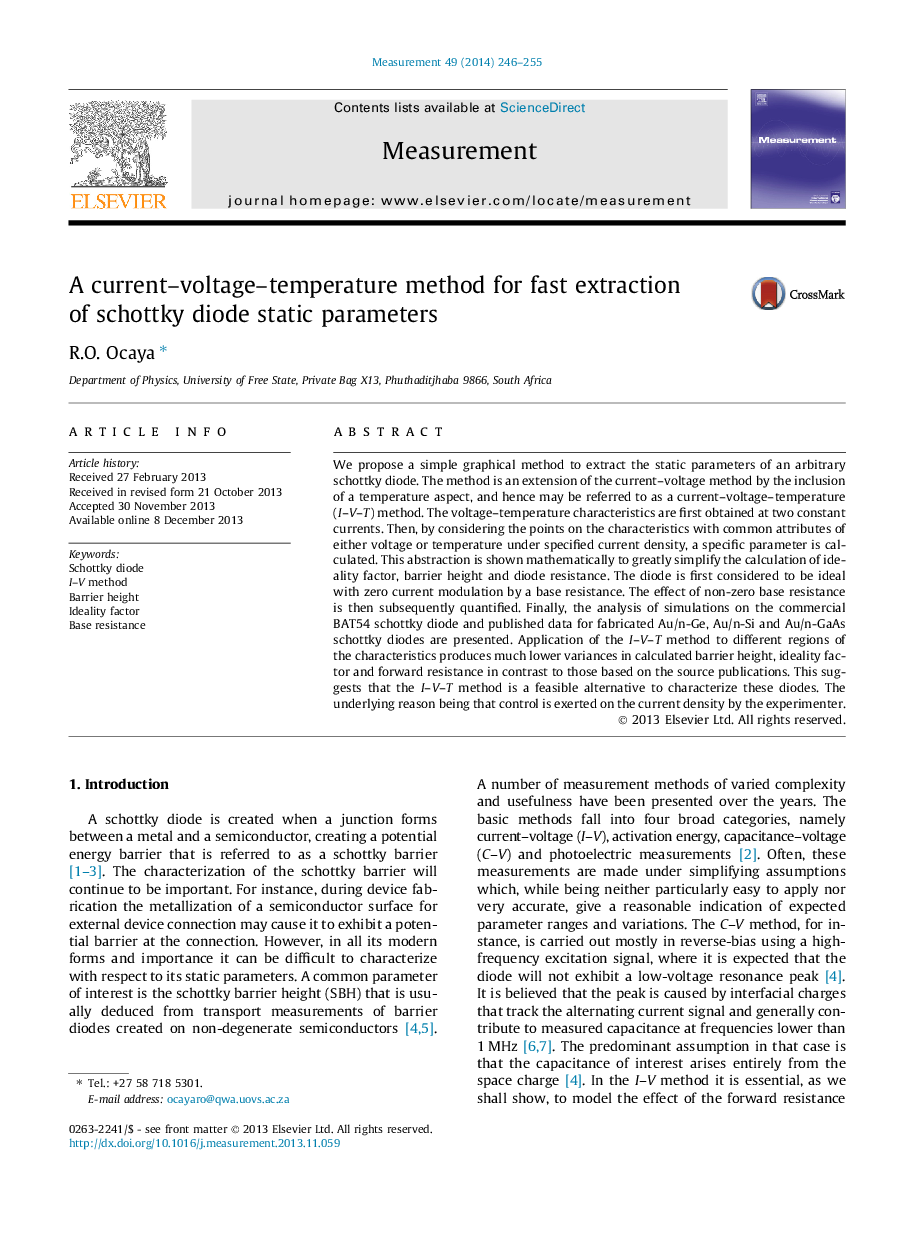| کد مقاله | کد نشریه | سال انتشار | مقاله انگلیسی | نسخه تمام متن |
|---|---|---|---|---|
| 727396 | 1461538 | 2014 | 10 صفحه PDF | دانلود رایگان |
• We propose a novel current–voltage–temperature (IVT) method for schottky diodes.
• I–V characteristics are put into useful IVT form.
• The method enables the rapid determination of barrier height, ideality factor and resistance.
• Method is applicable to existing multi-temperature I–V and for new devices.
• Method is useful for arbitrary schottky diodes – both experimental and commercial types.
We propose a simple graphical method to extract the static parameters of an arbitrary schottky diode. The method is an extension of the current–voltage method by the inclusion of a temperature aspect, and hence may be referred to as a current–voltage–temperature (I–V–T) method. The voltage–temperature characteristics are first obtained at two constant currents. Then, by considering the points on the characteristics with common attributes of either voltage or temperature under specified current density, a specific parameter is calculated. This abstraction is shown mathematically to greatly simplify the calculation of ideality factor, barrier height and diode resistance. The diode is first considered to be ideal with zero current modulation by a base resistance. The effect of non-zero base resistance is then subsequently quantified. Finally, the analysis of simulations on the commercial BAT54 schottky diode and published data for fabricated Au/n-Ge, Au/n-Si and Au/n-GaAs schottky diodes are presented. Application of the I–V–T method to different regions of the characteristics produces much lower variances in calculated barrier height, ideality factor and forward resistance in contrast to those based on the source publications. This suggests that the I–V–T method is a feasible alternative to characterize these diodes. The underlying reason being that control is exerted on the current density by the experimenter.
Journal: Measurement - Volume 49, March 2014, Pages 246–255
